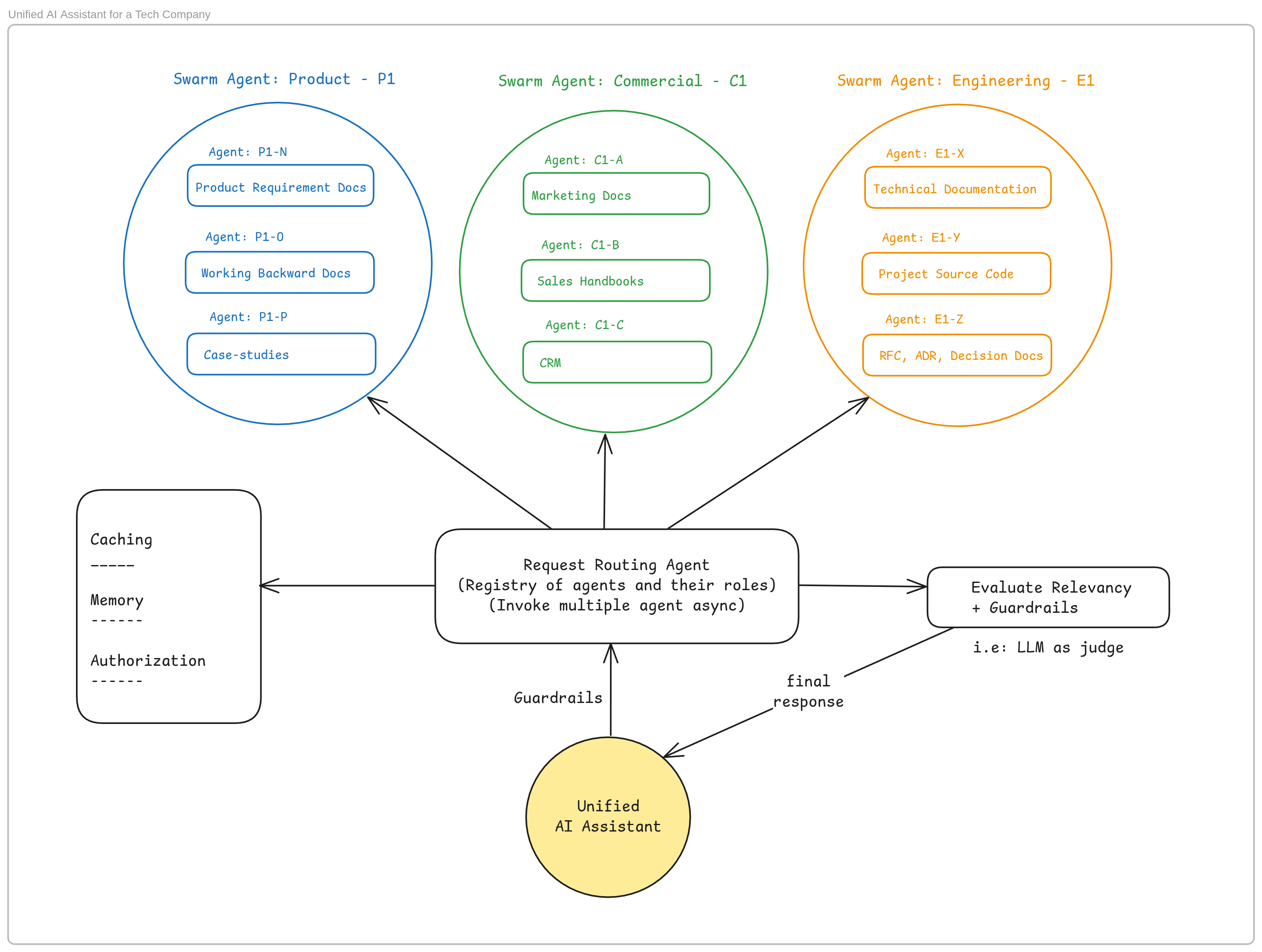In any growing tech company, information gets siloed. Product has its requirement docs, Engineering has its source code and technical decisions, and Commercial has its sales playbooks and marketing materials. Finding a single, coherent answer to a cross-functional question like, “What’s the technical status of our most requested enterprise feature?” can be a tedious journey through different departments and documents.
But what if we could build an AI that mirrors our company’s structure? That’s the core idea behind a Swarm Agent Architecture.
Specialized Agents for Specialized Knowledge
Instead of one monolithic AI trying to know everything, we create smaller, specialized micro-agents for each domain. As shown in the diagram, this approach creates distinct agent swarms:
- Product Swarm (P1): Agents trained exclusively on Product Requirement Docs (PRDs), case studies, and other product-related artifacts.
- Commercial Swarm (C1): Agents that are experts on marketing documents, sales handbooks, and CRM data.
- Engineering Swarm (E1): Agents with deep knowledge of technical documentation, project source code, and architecture decision records (ADRs).
Each department owns and maintains its set of agents, ensuring the information source is always up-to-date and accurate.
Unifying the Swarm for Coherent Answers
The magic happens when a user query comes into the Unified AI Assistant.
-
Request Routing: A central “Request Routing Agent” acts as a dispatcher. It analyzes the user’s question and intelligently identifies which specialized agents across the different swarms are needed to formulate a comprehensive answer.
-
Asynchronous Invocation: The router invokes multiple agents simultaneously. For our example question, it might ping an agent from the Product swarm (to check the feature roadmap), an agent from the Engineering swarm (to check the implementation status in the source code), and an agent from the Commercial swarm (to verify which enterprise clients requested it).
-
Synthesis and Guardrails: The individual responses from the swarm are sent to an evaluation layer. Here, another LLM often acts as a “judge.” It synthesizes the pieces of information into a single, coherent answer. Crucially, it also applies guardrails to ensure the final response is relevant, factually correct, and adheres to company policies. This step is vital for accuracy and trust.
-
The Final Response: The user receives one clear, consolidated answer from the Unified AI Assistant, drawing from the expert knowledge of the entire organization. The system is supported by robust components for caching (for speed), memory (for context), and authorization (for security).
By creating a collaborative swarm of specialized AI agents, we can build a powerful information retrieval system that breaks down departmental walls and provides truly holistic insights, instantly.
